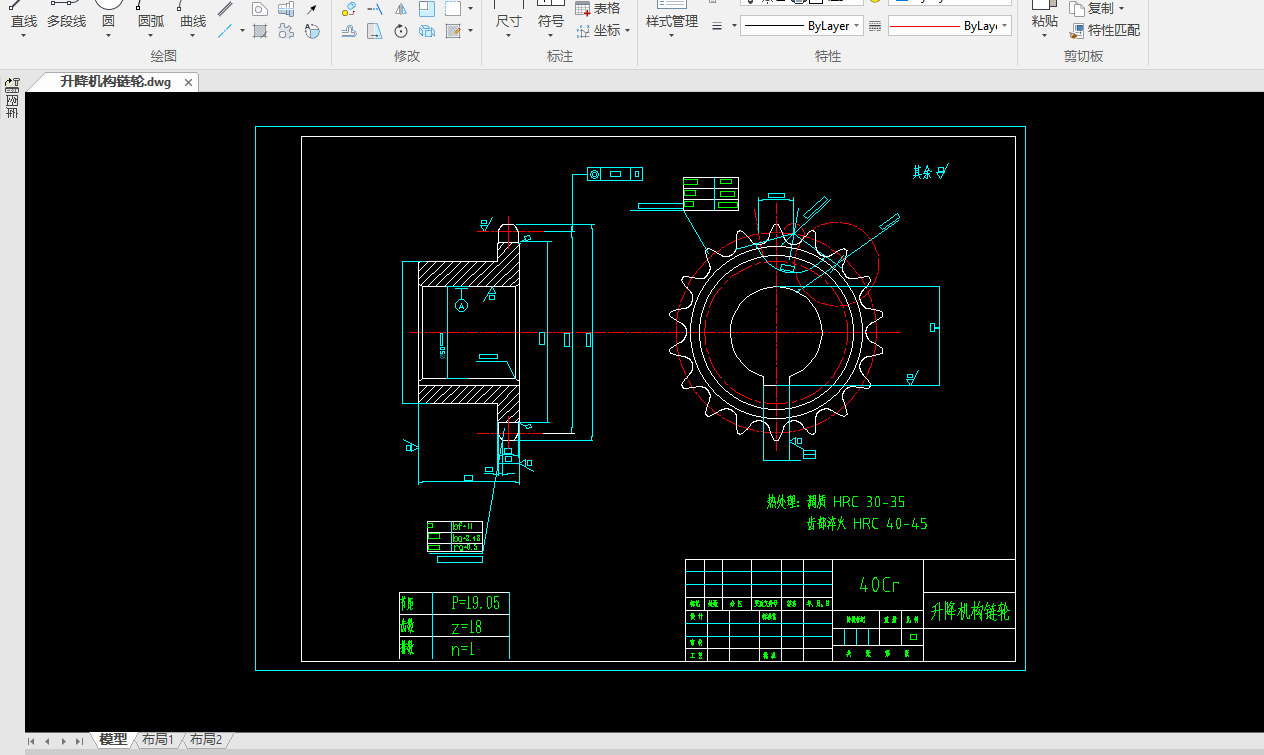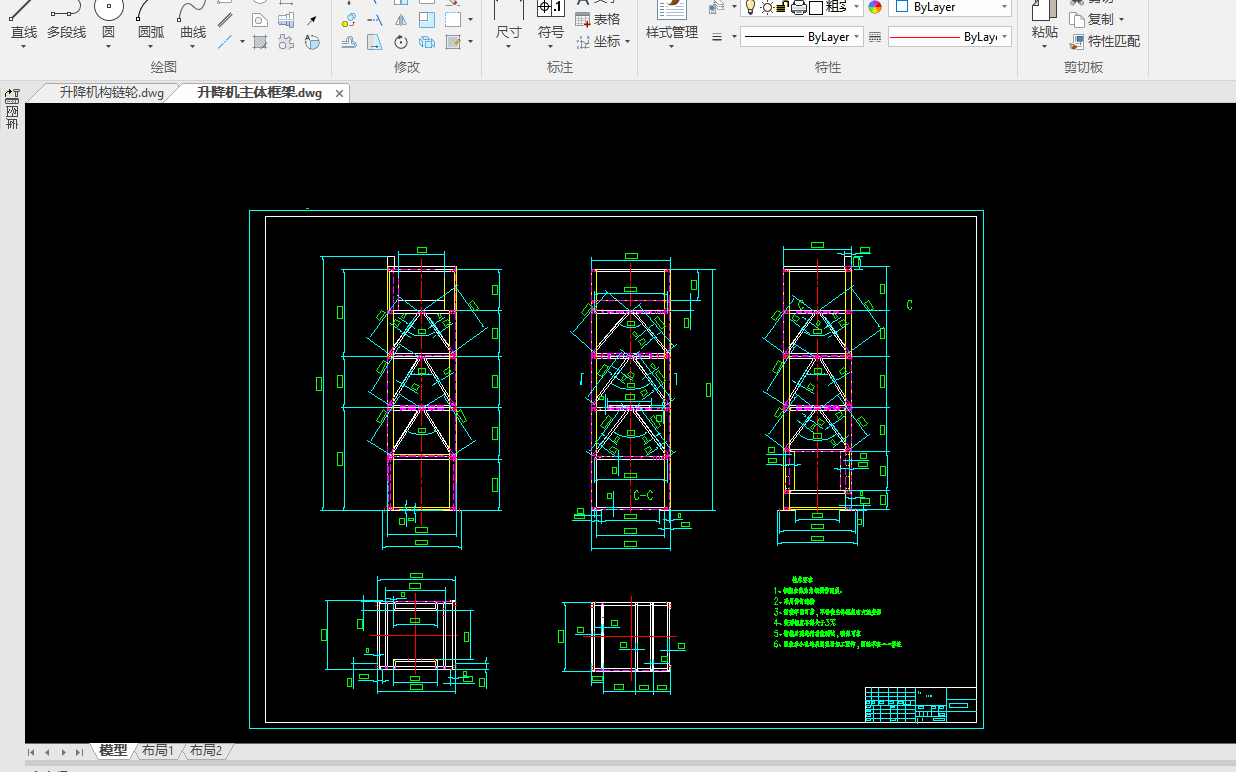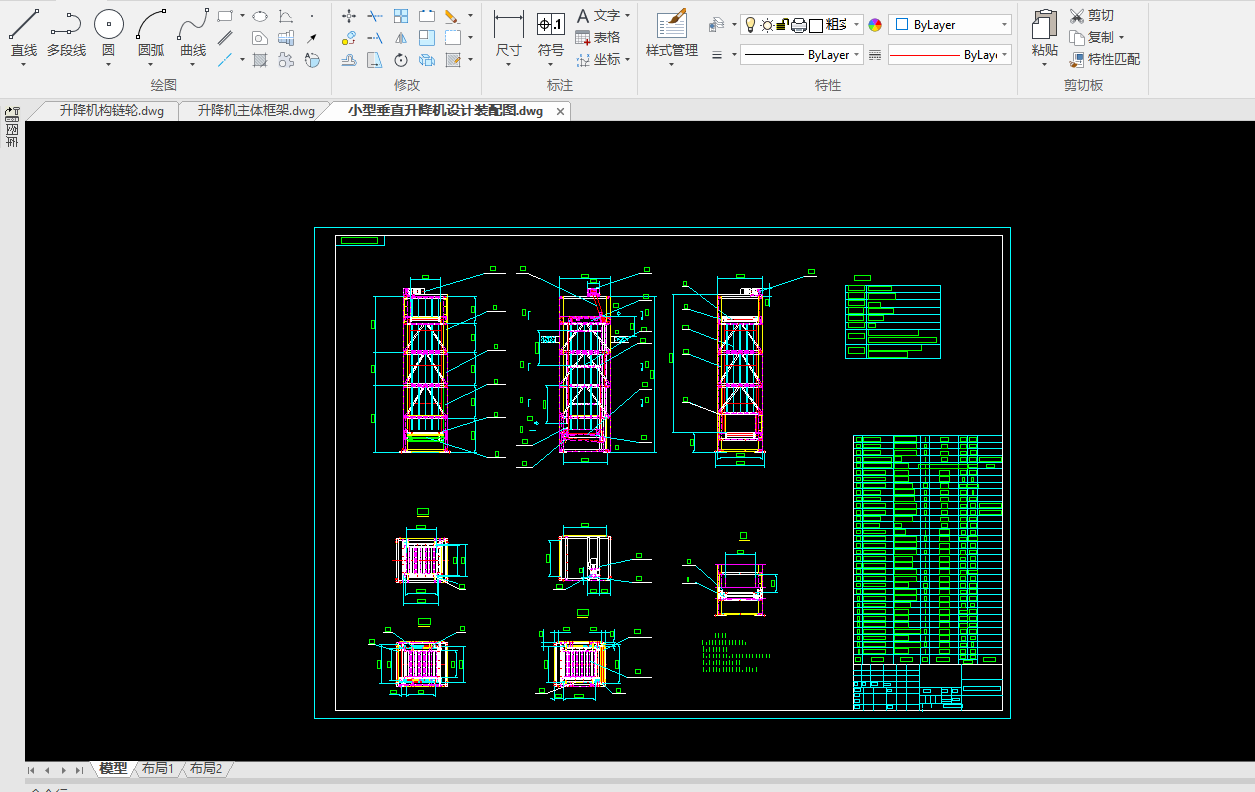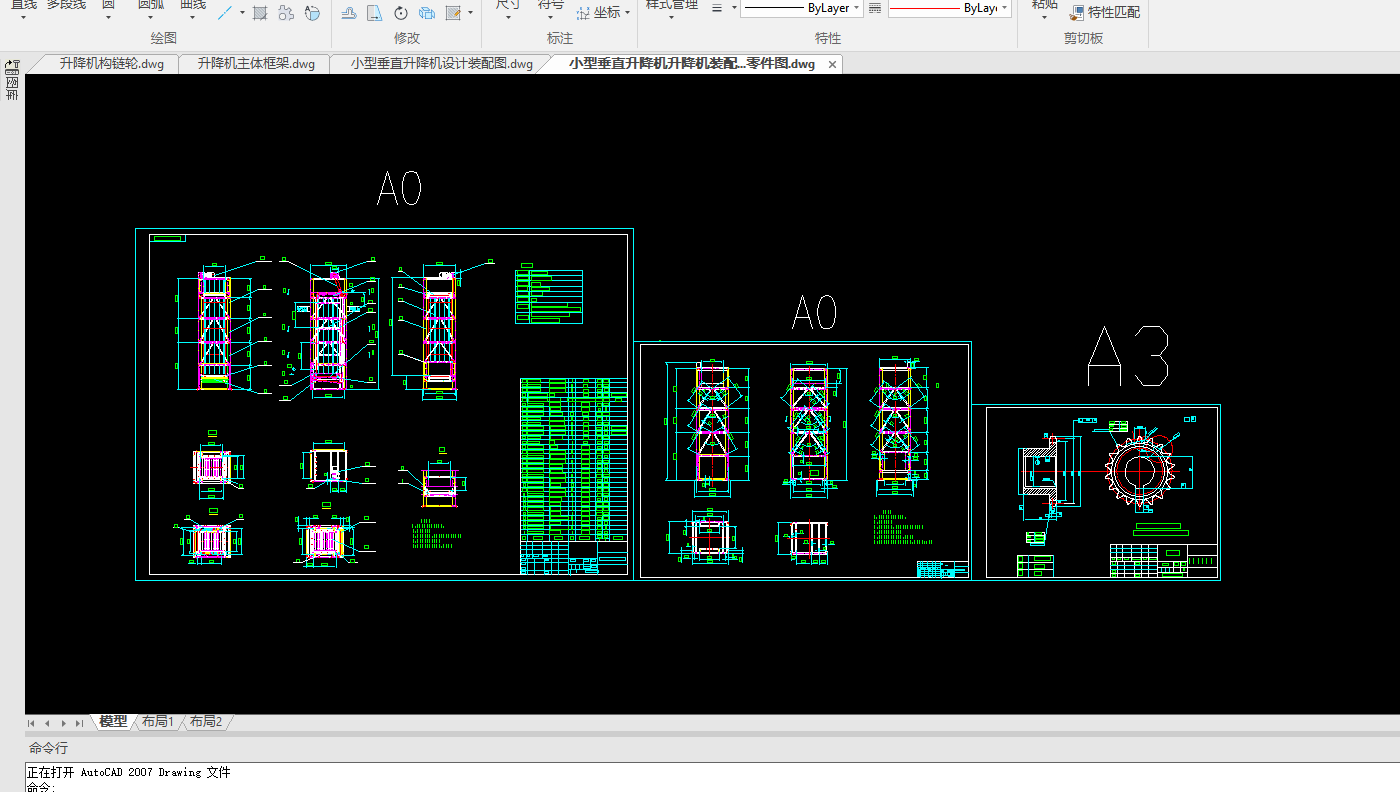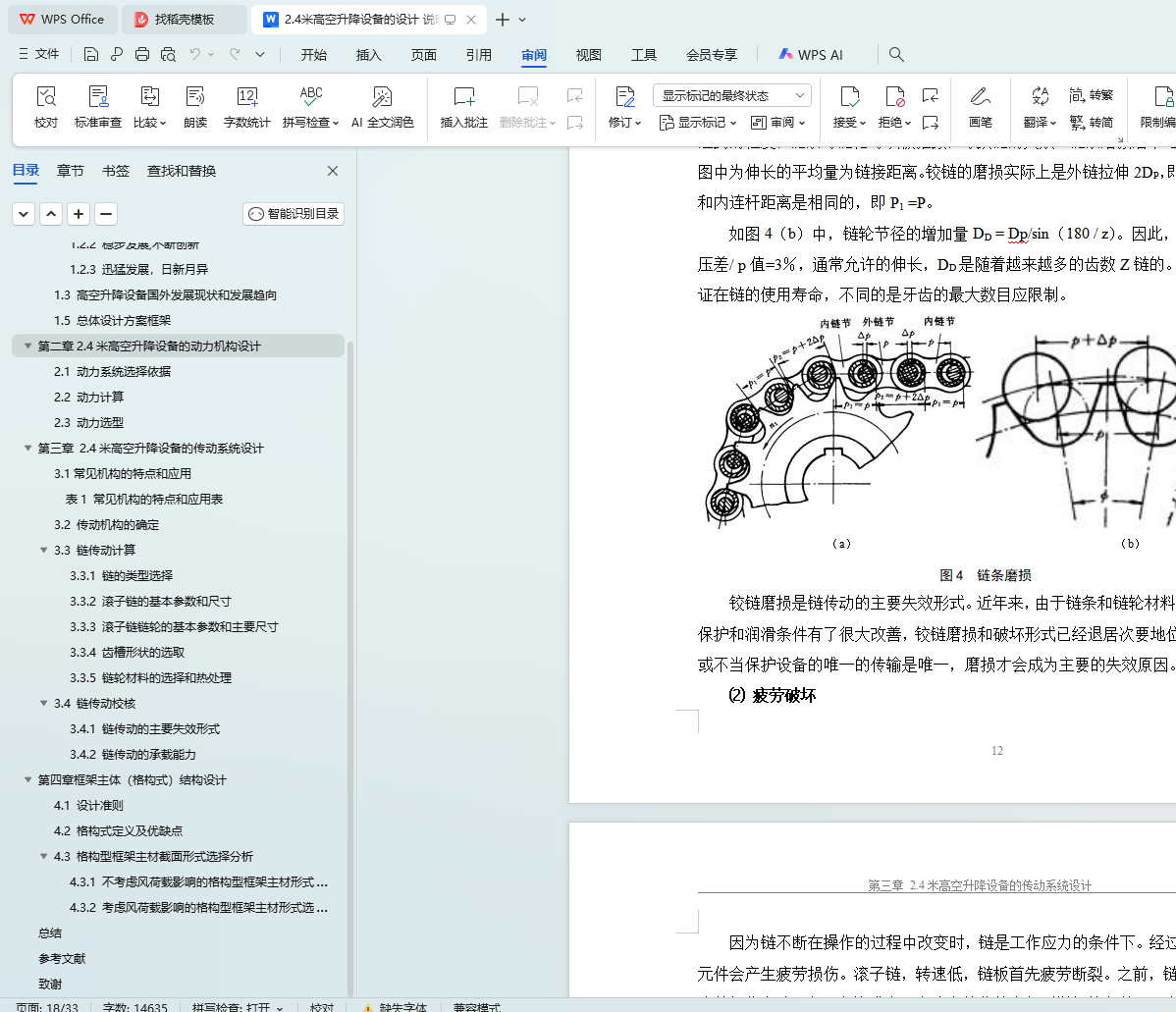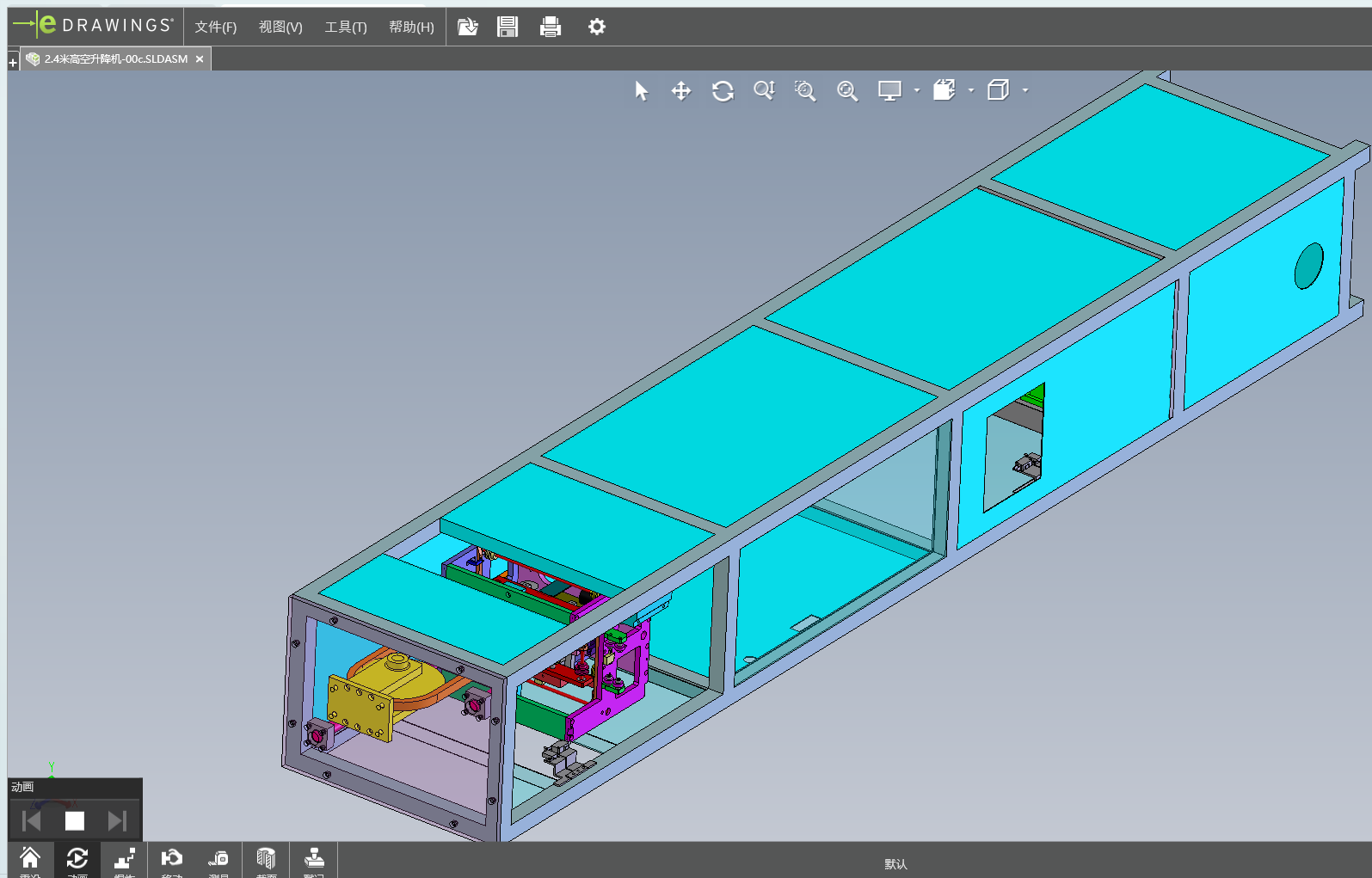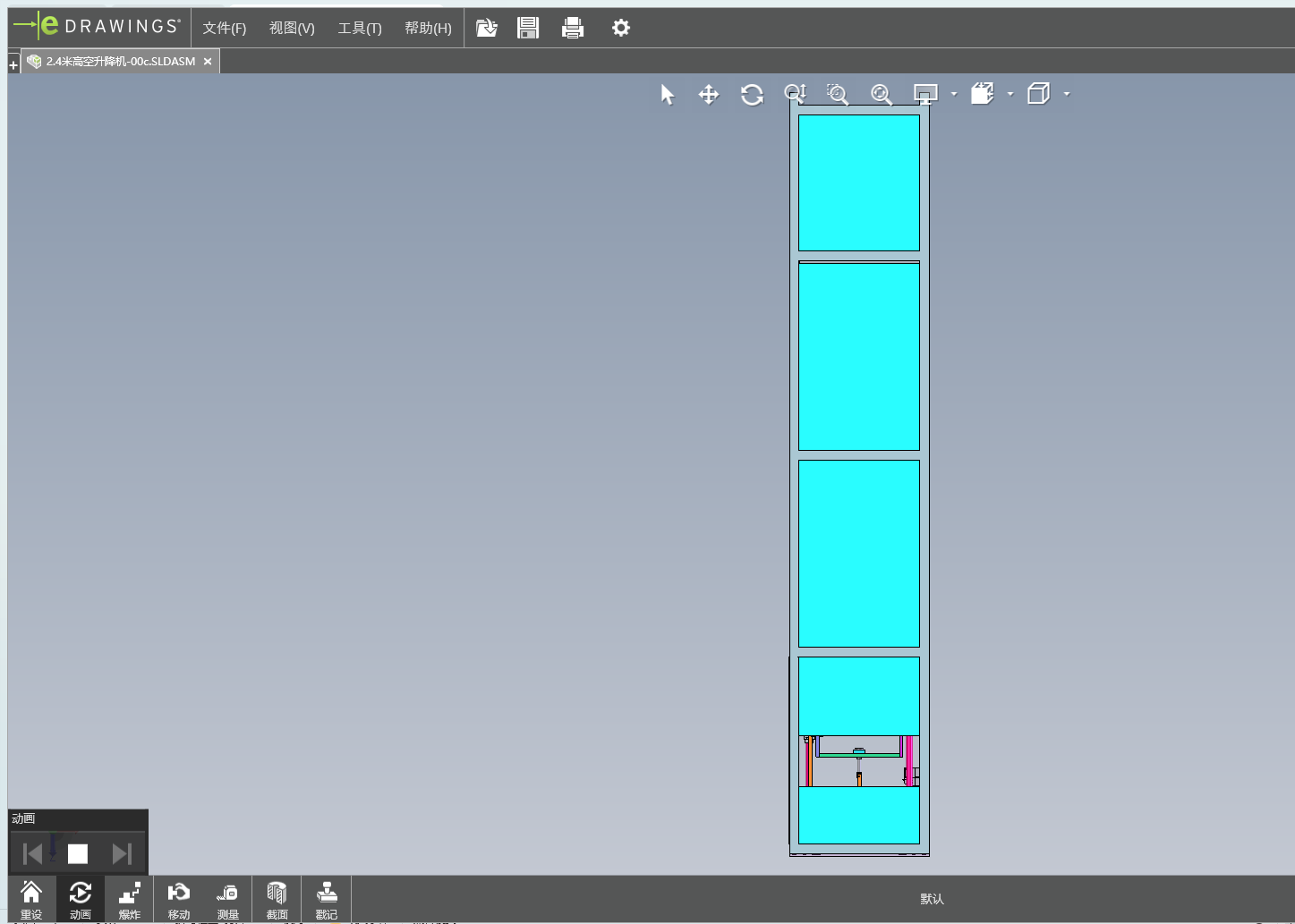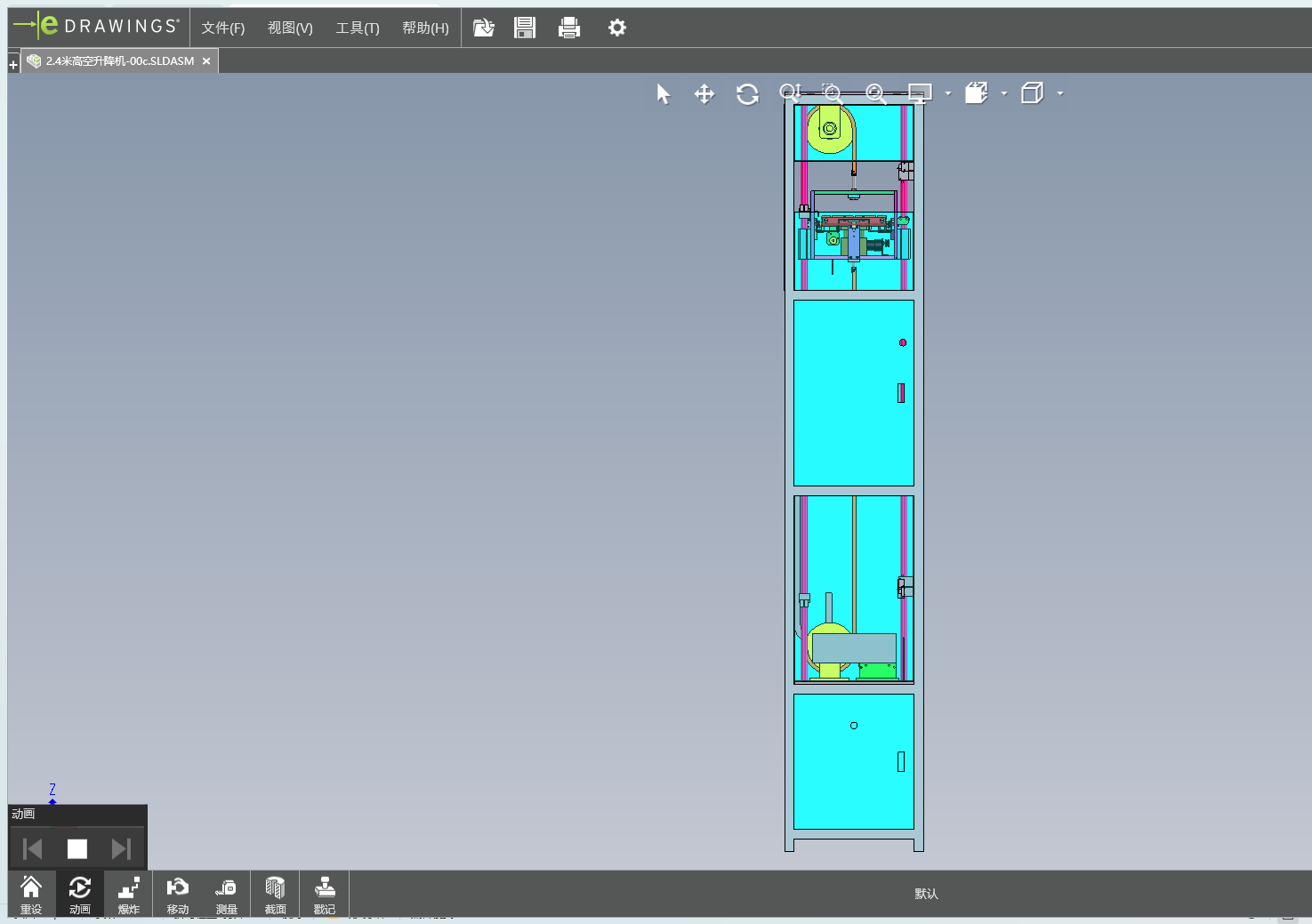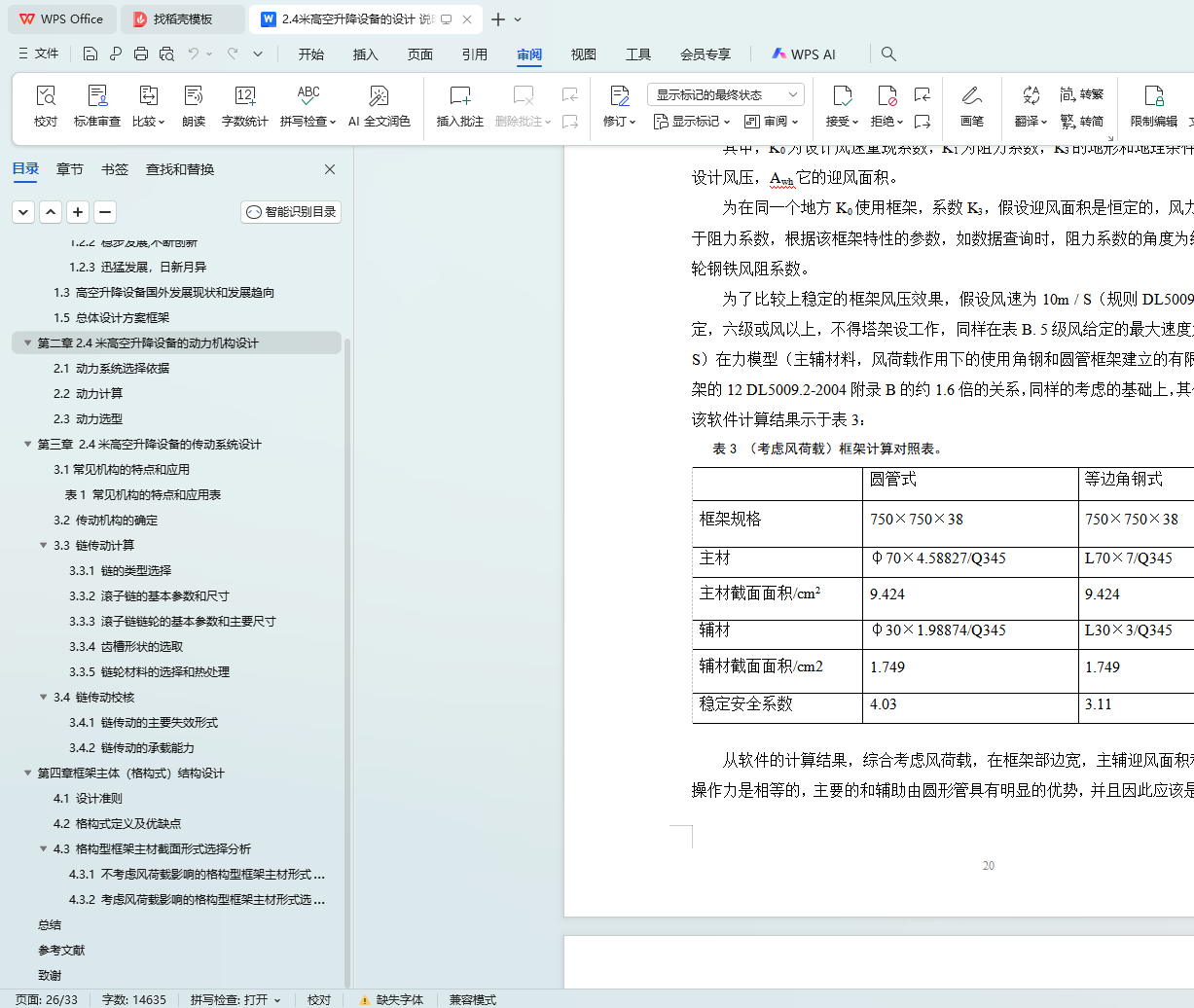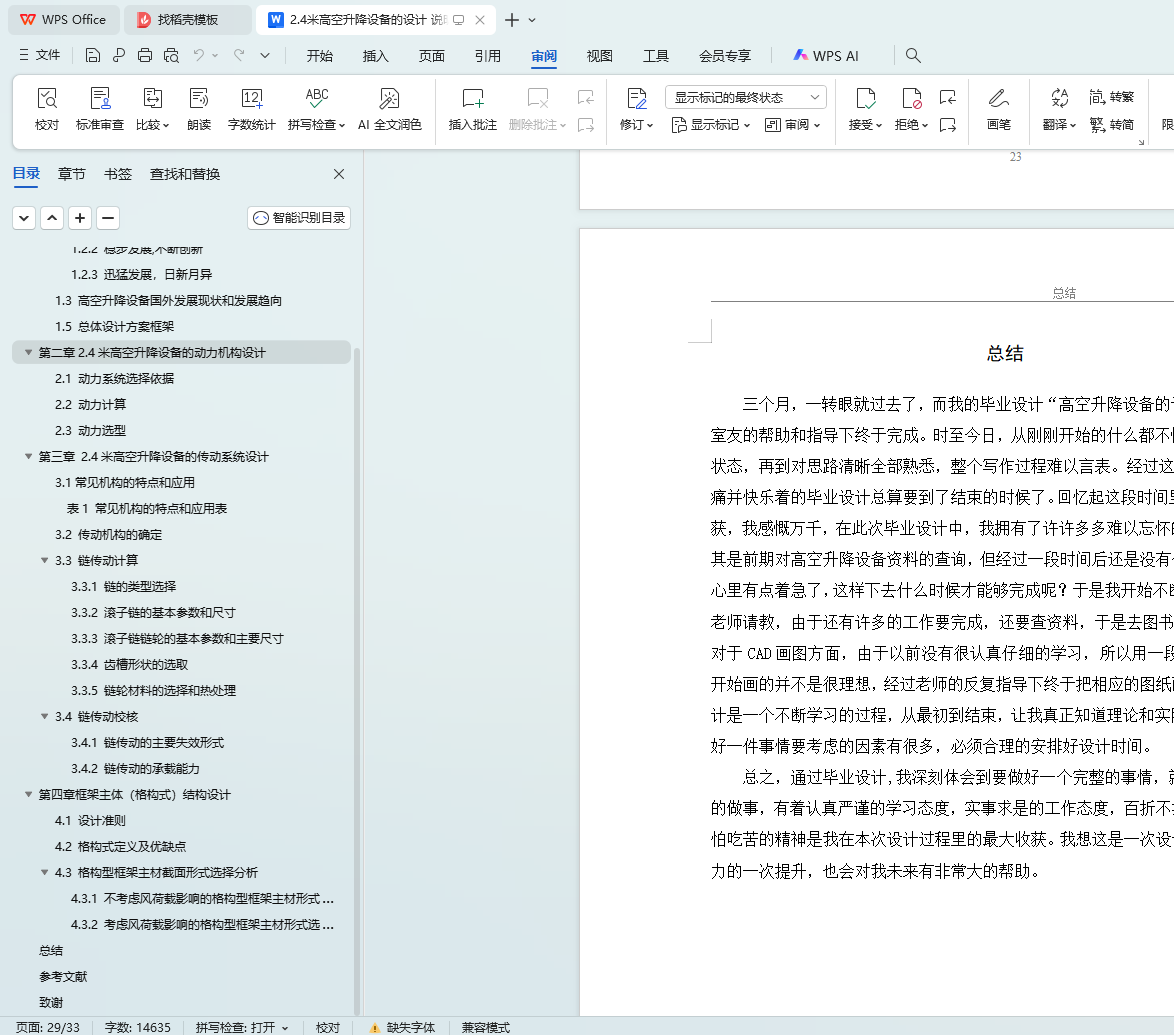摘要
高空升降设备在现代工业生产和日常生活中扮演着至关重要的角色。其广泛的应用范围和与电梯相似的性能使其成为商业建筑、工业生产和维护作业中不可或缺的工具。本文聚焦于“2.4米高空升降设备的设计”课题,旨在设计一款适用于特定高空作业场景、安全高效的升降设备。
在现实生活中,高空升降设备不仅为人们的日常出行提供了便利,还在工业生产作业中发挥着举足轻重的作用。随着经济的快速发展和社会需求的不断增加,高空作业的需求也在持续增长。传统的脚手架、梯子等作业方式已难以满足现代高空作业的安全和效率需求,因此,设计一种新型的高空升降设备显得尤为重要。
本设计课题通过对高空升降设备的现状进行研究,结合实际需求,选择了电机(带减速器)作为驱动力,链条驱动器作为传输形式,并设计了框架结构作为主体机构。电机和链条驱动器的选择旨在提高设备的升降速度和承载能力,从而提升高空作业的效率。同时,框架结构的设计确保了设备的稳定性和安全性。
在设计过程中,我们以Z轴升降的关键部件为核心进行了详细的设计和计算。通过精确的计算和选型,确保了设备在达到预定高度时能够保持稳定性和安全性。此外,我们还对设备的安全性能进行了深入研究,包括过载保护、紧急制动、防坠落等安全装置的设计和实现,以确保设备在极端工况下仍能保持良好的安全性能。
除了安全性和效率性,本设计还注重设备的经济性和环保性。通过优化材料选择、减少冗余设计、提高能源利用效率等方式,我们力求在实现设备高性能的同时,降低其制造成本和运行能耗。
综上所述,本设计课题旨在设计一款适用于2.4米高空作业的升降设备,以满足特定场景下的作业需求。通过精确的计算和设计,我们确保了设备在安全性、效率性、经济性和环保性等方面的优异表现。预期该设备将在建筑维修、设备安装、消防救援等领域发挥重要作用,为高空作业提供更加安全、高效、便捷的工具。
关键词: 高空升降设备; 物料升降;链传动;框架式结构;升降设备
Abstract
High-altitude lifting equipment plays a vital role in modern industrial production and daily life. Its wide range of applications and similar performance to elevators make it an indispensable tool in commercial construction, industrial production and maintenance operations. This paper focuses on the topic of "the design of 2.4 meters high-altitude lifting equipment", aiming to design a safe and efficient lifting equipment suitable for specific high-altitude working scenarios.
In real life, high-altitude lifting equipment not only provides convenience for people's daily travel, but also plays a pivotal role in industrial production operations. With the rapid development of the economy and the increasing social demand, the demand for high-altitude work also continues to grow. Traditional scaffolding, ladder and other operation methods have been difficult to meet the safety and efficiency needs of modern high-altitude work, therefore, it is particularly important to design a new type of high-altitude lifting equipment.
Through the current situation of high altitude lifting equipment, combined with the actual needs, choose the motor (with reducer) as the driving force, the chain driver as the transmission form, and design the frame structure as the main mechanism. The selection of motors and chain drivers is designed to improve the lifting speed and carrying capacity of the equipment, thus improving the efficiency of high-altitude work. At the same time, the design of the frame structure ensures the stability and safety of the equipment.
In the design process, we carried out detailed design and calculation with the key components of Z axis lifting as the core. Through accurate calculation and selection, the stability and safety of the equipment reaches the predetermined height. In addition, we have also conducted an in-depth study on the safety performance of the equipment, including the design and implementation of overload protection, emergency braking, fall prevention and other safety devices, to ensure that the equipment can still maintain good safety performance under extreme working conditions.
In addition to safety and efficiency, the design also focuses on the economy and environmental protection of the equipment. By optimizing material selection, reducing redundancy design, and improving energy efficiency, we strive to achieve high performance of the equipment while reducing its manufacturing cost and operating energy consumption.
In conclusion, the design project aims to design a lifting equipment suitable for 2.4 m high work to meet the operation requirements in a specific scenario. Through accurate calculation and design, we ensure the excellent performance of the equipment in terms of safety, efficiency, economy and environmental protection. The equipment is expected to play an important role in construction maintenance, equipment installation, fire rescue and other fields, providing safe, more efficient and convenient tools for high-altitude work.
Key words: high altitude lifting equipment; material lifting; chain drive; frame structure; lifting equipment
目 录
第一章 绪 论
1.1高空升降设备在生产和生活中的作用和意义
1.2高空升降设备国内研究发展情况
1.2.1 进外资,合作办厂
1.2.2 稳步发展,不断创新
1.2.3迅猛发展,日新月异
1.3 高空升降设备国外发展现状和发展趋向
1.4 课题条件
1.5 总体设计方案框架
第二章 2.4米高空升降设备的动力机构设计
2.1 动力系统选择依据
2.2 动力计算
2.3 动力选型
第三章 2.4米高空升降设备的传动系统设计
3.1常见机构的特点和应用
3.2 传动机构的确定
3.3 链传动计算
3.3.1链的类型选择
3.3.2滚子链的基本参数和尺寸
3.3.3 滚子链链轮的基本参数和主要尺寸
3.3.4 齿槽形状的选取
3.3.5 链轮材料的选择和热处理
3.4 链传动校核
3.4.1 链传动的主要失效形式
3.4.2 链传动的承载能力
第四章 框架主体(格构式)结构设计
4.1 设计准则
4.2 格构式定义及优缺点
4.3 格构型框架主材截面形式选择分析
4.3.1 不考虑风荷载影响的格构型框架主材形式选择分析
4.3.2 考虑风荷载影响的格构型框架主材形式选择分析
总结
参考文献
致 谢
